Leonardo da Vinci’s Mona Lisa isn’t just the world’s most famous painting; it’s a global icon. It’s faced theft, vandalism (including a cake attack!), and resides behind bomb-proof glass. Its value is immense, a testament to its cultural power.
But even bulletproof glass can’t shield it from artistic reinterpretation. Countless artists have put their unique spin on da Vinci’s masterpiece. Get ready to explore ten alternative versions of the Mona Lisa – some are clever, some are controversial, and some are just plain weird!
10 L.H.O.O.Q. by Marcel Duchamp
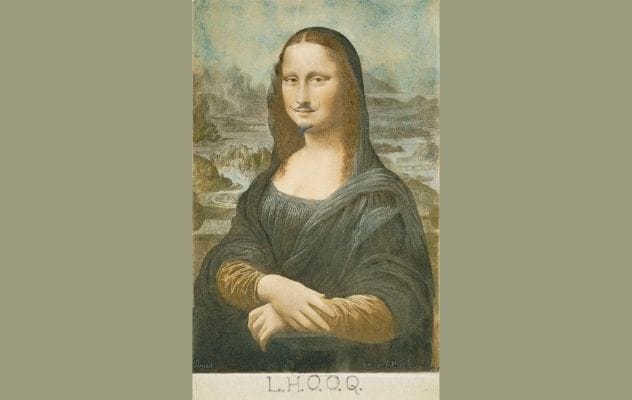
Marcel Duchamp was a master of shaking up the art world in the early 20th century. He introduced “readymades,” turning everyday objects into art simply by placing them in a gallery. Think of his infamous “Fountain,” which was just a urinal signed “R. Mutt.”
For his take on the Mona Lisa, Duchamp didn’t repaint her. Instead, he took a simple postcard reproduction and cheekily drew a mustache and goatee on her face. Below it, he added the letters L.H.O.O.Q. When you say these letters out loud in French, they sound like “Elle a chaud au cul,” which translates to “She has a hot ass.” Duchamp’s provocative point? Even the most revered art piece is still an object that can be played with and questioned.
9 Mona a’la Mace by Lennie Mace
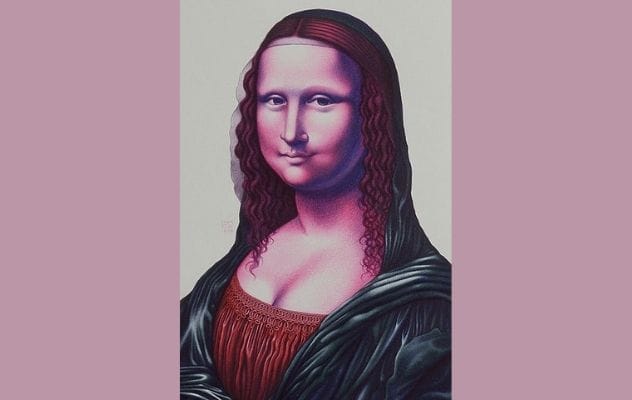
We all scribble with pens, but Lennie Mace takes doodling to an entirely different level. Known as the “da Vinci of Doodlers,” Mace is a wizard with the humble ballpoint pen. He creates detailed illustrations and “PENtings” using only standard pens. His most renowned work? A ballpoint Mona Lisa called Mona a’la Mace.
Commissioned by the Pilot pen company, Mace swapped Leonardo’s soft, earthy tones for vibrant purples. Remarkably, using just ballpoints, he managed to capture the smooth shading and gentle curves that define the original Mona Lisa’s style. While it once graced Pilot’s offices, the current location of this unique piece is a mystery. Given the hefty commission Mace received, it’s unlikely this incredible doodle ended up in the trash!
8 Mona Lisa Bazooka by Banksy
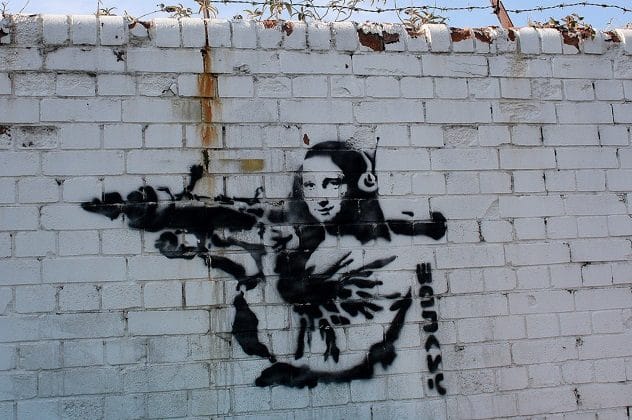
Banksy, the elusive and world-famous street artist, is known for his thought-provoking graffiti that appears unexpectedly. His works often fetch millions, sometimes leading property owners to remove entire walls to cash in.
In 2007, Banksy left his mark on London’s Soho with his version of the Mona Lisa. This time, she wasn’t just gazing enigmatically; she was armed with a bazooka. The addition of heavy weaponry transforms her subtle smile into something potentially sinister. Is she anticipating destruction? The piece certainly sparks conversation. Not everyone was impressed, however; one onlooker reportedly remarked about the artist likely compensating for something.
7 Isleworth Mona Lisa
Leonardo da Vinci was known for his meticulous nature, often spending years perfecting a single painting. The Louvre’s Mona Lisa might have been worked on from 1503 to 1517. Could he have painted another version during that time? Some art historians believe so, pointing to the Isleworth Mona Lisa.
This version was acquired in Italy in the 1780s and later brought to Britain. It gained attention in 1913 when claims emerged that it was an earlier Leonardo original. One owner even published a book arguing it was the *only* authentic Leonardo Mona Lisa, dismissing the Louvre’s as a copy (a claim that would have made his painting incredibly valuable).
However, doubts persist. Leonardo typically painted on wood panels, but the Isleworth version is on canvas. Scientific analysis and historical consensus still favor the Louvre painting as the primary version by Leonardo himself, though the debate continues.
6 Prado Mona Lisa
Given the Mona Lisa’s fame, numerous copies exist. For years, the version hanging in Madrid’s Prado Museum was considered just another replica. But during restoration work in 2012, experts made a thrilling discovery.
Scientific analysis revealed the Prado Mona Lisa dates from roughly 1507 to 1516 – precisely when Leonardo was painting his iconic portrait. When layers of old varnish and black overpaint were removed, the painting’s true quality shone through. It’s remarkably well-preserved, perhaps even more so than the Louvre version, offering clearer details of the background landscape.
Interestingly, the Prado version is painted from a slightly different perspective. This suggests it was likely created by an apprentice working alongside Leonardo in his studio, witnessing the master at work. While the exact artist remains unknown, it offers a fascinating glimpse into Leonardo’s workshop.
5 Monna Vanna
Salai was one of Leonardo’s closest assistants, perhaps even his lover. Leonardo taught him painting, though Salai never matched his master’s skill. Some theories even propose Salai was the model for the Mona Lisa itself.
Salai’s connection deepens: he might have painted the Prado version, and it’s believed he inherited the Louvre Mona Lisa after Leonardo’s death. We know for sure Salai created his own version called Monna Vanna (Vain Woman). This painting mimics the Mona Lisa’s pose but features exposed breasts.
It might seem like a simple scandalous copy, but it’s more complex. A charcoal sketch resembling Monna Vanna, possibly drawn by Leonardo himself, exists. Intriguingly, it appears to depict Salai with breasts. Was this Leonardo’s tribute to his handsome assistant, or a playful jest?
4 Mona Lisa Smoking a Pipe by Sapeck
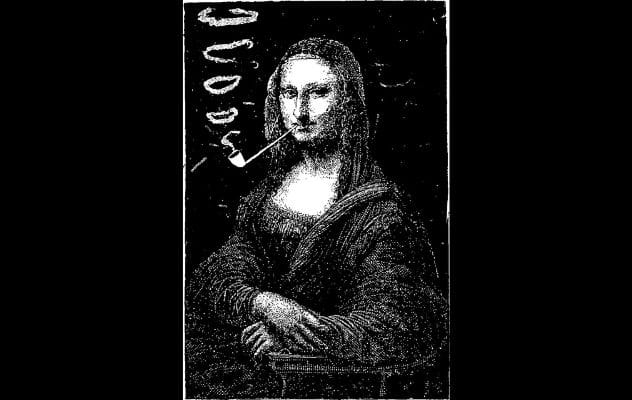
Before Dadaism and Surrealism revolutionized art with their bizarre creations, other artists were pushing boundaries. In 1882, Paris hosted the Arts Incohérents exhibition, featuring works by artists who humorously claimed they couldn’t draw. It was a hit. One contributor was Eugène Bataille, known as Sapeck.
Sapeck was an eccentric figure, sometimes seen walking around Paris with his head painted blue – a precursor to performance art. It’s no surprise, then, that his take on the Mona Lisa was unconventional.
His version shows the famous lady casually smoking a pipe, puffing out smoke rings. It’s a simple, humorous twist that predates many later, more famous parodies of the iconic painting.
3 Mona Lisa by Fernando Botero

Every artist develops a unique style. Colombian painter and sculptor Fernando Botero is famous for his distinctive approach: depicting people and figures with exaggerated, inflated volumes, making them look plump and filling the canvas or space.
Botero’s Mona Lisa adopts this signature style. She’s not the slender figure of Leonardo’s original but a robust, almost spherical presence. Yet, she retains that same enigmatic expression. The interpretation of her look, however, feels vastly different when filtered through Botero’s unique artistic lens.
Botero didn’t stop at one version; he painted several. One notable example is “Mona Lisa, Age Twelve,” which portrays a young, greenish-hued girl. Without the title, you might not immediately recognize her as the iconic subject.
2 Monna Lisa (Be Back in 5 Minutes) by Sophie Matisse
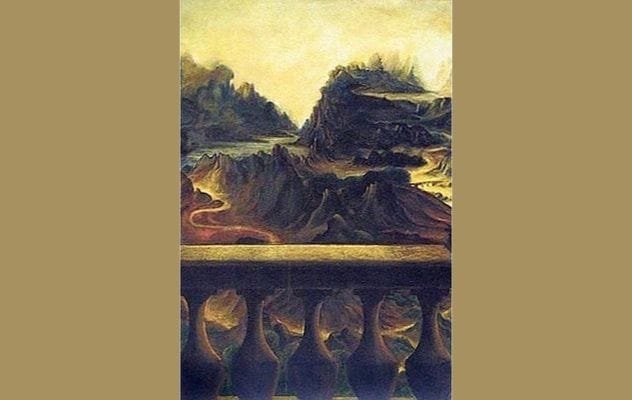
Seeing the real Mona Lisa often involves peering through a crowd of phone-wielding tourists. It’s smaller than many expect, and getting a close look at the details is tough. While focusing on her famous smile, it’s easy to miss the intricate background – an imaginary landscape with mountains, paths, and a bridge.
Sophie Matisse, the great-granddaughter of renowned painter Henri Matisse, offers a fresh perspective. In her series “Be Back in 5 Minutes,” she recreates famous paintings but removes the central human figures. Her version of the Mona Lisa reveals the beautiful, detailed scenery that’s usually obscured by the sitter herself. It invites us to appreciate the world Leonardo built behind his famous subject.
1 Self Portrait Mona Lisa by Salvador Dali
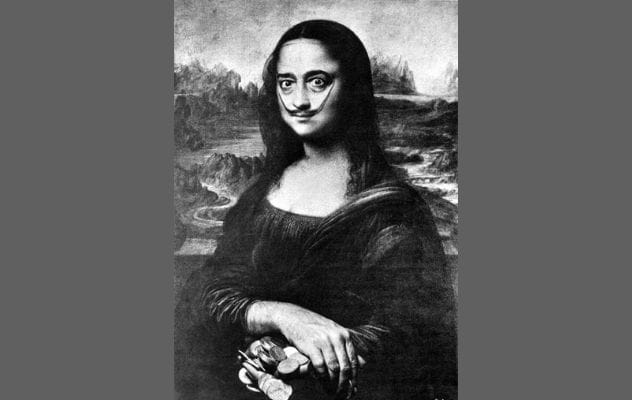
Salvador Dali, a leading figure of Surrealism, is known for his dreamlike paintings filled with melting clocks and bizarre creatures. But Dali didn’t just create strange art; he lived a strange life, turning himself into a performance piece, complete with his iconic, upturned mustache.
Intriguingly, Dali’s mustache echoes the one Duchamp drew on his L.H.O.O.Q. postcard decades earlier. Dali took the concept a step further. He didn’t just add his mustache; he replaced Mona Lisa’s entire face with his own, wide-eyed and clutching a handful of coins. Perhaps it was a commentary on the absurdity of the art market and the astronomical prices attached to masterpieces.
Speaking of value, the real Mona Lisa is priceless and will never be sold. It was insured for $100 million in 1962 (nearly $1 billion today), but its actual worth in the current art market is truly immeasurable.
The Mona Lisa’s enduring mystique continues to fascinate artists and audiences alike. These alternative versions, from the humorous to the serious, show the painting’s incredible power to inspire creativity and conversation across centuries and styles. Each reinterpretation adds another layer to the story of the world’s most famous smile.
Which alternative Mona Lisa is your favorite? Do you know of any others? Leave your comment below!










